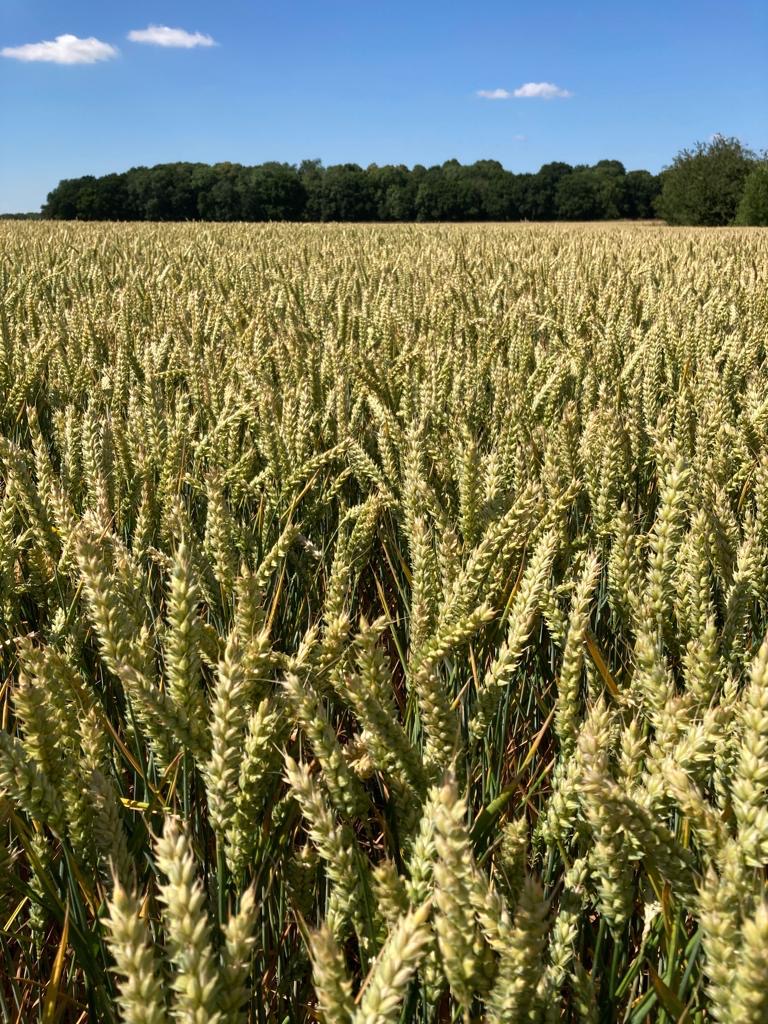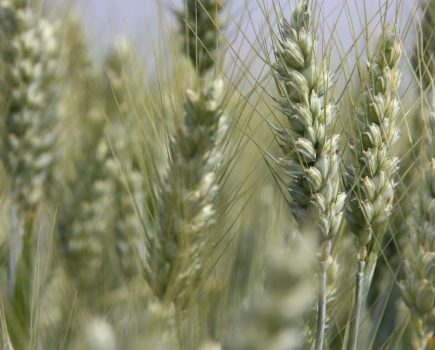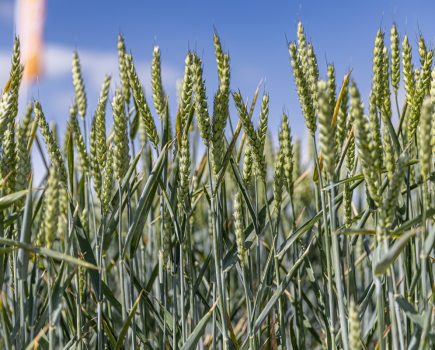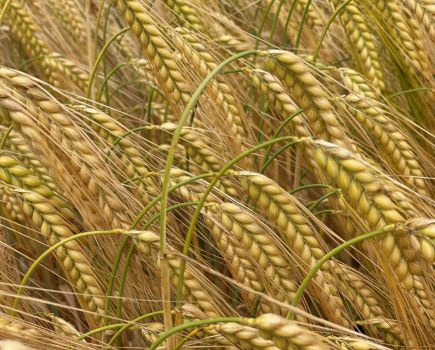Named after the bustling London street where the glamour of The Ritz meets the prestige of the UK Flour Millers HQ, a new candidate looks set to shake up the Group 1 market…CPM explores DSV Arlington.
“The idea has always been to offer something that growers of Skyfall can pick up and grow in a similar way, but with improved yield and resistance.” MATT KERTON
By Charlotte Cunningham
The development of a successful milling wheat is rarely straightforward. Balancing grain quality, yield potential and agronomic resilience is a task that’s arguably eluded breeders for decades, leaving the Group 1 sector reliant on a narrow band of names like Crusoe, Skyfall and Zyatt.
But that looks like it could be set to change this autumn, with a new candidate coming in hot on the heels of its competitors…
Meet Arlington, a new potential Group 1 from the DSV stable which is attracting attention from breeders, growers and millers alike.
Arlington’s journey to hopeful recommendation hasn’t been down to pure luck – it’s been a breeding project with clear intent which began back in 2016, explains DSV UK wheat breeder Dr Matt Kerton.
“Arlington is a cross between Marston – a line destined for bread but downgraded to feed – and Skyfall, the established Group 1 milling variety,” he says. “Although Marston didn’t bake well enough to make a loaf, it had superb grain quality and yield. Skyfall brought proven baking performance but also susceptibility to yellow rust. By combining the two, the hope was to capture yield and quality while ironing out weaknesses.”
WIDE DRILLING WINDOW
Early selections showed promise, but what became Arlington quickly stood out. “We noticed it had a very low vernalisation requirement,” explains Matt. “That gives growers a wider drilling window – it can be sown from a traditional autumn slot right through to early spring. Given the recent run of wet autumns, that flexibility could be game-changing.”
Even the name reflects its milling ambition. “We chose Arlington because the UK Flour Millers have their headquarters on Arlington Street, next to the Ritz in London,” he adds. “It felt like a fitting nod to the sector we were targeting.”
ROBUST
While the breeding strategy gives Arlington its technical backbone, its on-farm performance is what ultimately determines its place in rotations, says DSV’s Sarah Hawthorne. “Arlington carries a robust disease resistance package, combining strength against yellow rust, a septoria score of 7.1, plus the rare combination of orange blossom midge resistance and Pch1 eyespot tolerance – features that Skyfall alone previously offered in the Group 1 sector.
“It has short, stiff straw, standing it in good stead for early drilling, while its untreated yield of 90% underlines the strength of its resistance profile.”
She adds that Arlington mills very similarly to Skyfall – something which has been picked up by a lot of the millers who’ve seen samples. “It brings together a high protein content, a Hagberg Falling Number around 297, and a specific weight of 79.3kg/hl – ticking all the boxes millers want to see.”
Early trial results are encouraging too, says Sarah. “From the AHDB harvest data published so far, it’s performing really well among the Group 1s on treated yield. We’ve completely sold out of seed for this year, with huge interest from both growers and millers. That tells you a lot about the appetite for something fresh in this space.”
Matt adds: “The idea has always been to offer something that growers of Skyfall can pick up and grow in a similar way, but with improved yield and resistance.”
In the field, for farmer George Page – who runs a mixed arable and livestock business near Banbury – this season offered the chance to grow Arlington for the first time. He was one of just three UK growers involved in the candidate seed crops.
“I had 4ha of Arlington – drilled very thinly because I only had a 500kg bag – but it still yielded 7.5t/ha,” he says. “That was higher than the Skyfall I combined straight after it, which was impressive given the seed rate.”
He was also struck by its simplicity to manage. “Agronomically, it was straightforward. We followed protocol so it did get a growth regulator, but in truth it didn’t warrant it – it stood rock solid. In hindsight, I could have saved the spend, which says a lot about its straw strength.”
Disease pressure was low this year, but he notes Arlington showed no weaknesses. “It stayed clean, even in a season where rust was creeping in elsewhere.”
Compared with his existing wheats, Arlington impressed, comments George. “The Skyfall looked fine, but Arlington outyielded even at a thinner seed rate. I also grow Champion and Bamford, and while they give market opportunities, Arlington felt like a stronger Group 1 candidate because of its agronomics. It stood better and looked healthier.”
Straw yield was also notable, he adds. “It wasn’t over-abundant, but what was there was good quality, firm straw – not the weak, lanky type you worry about with some milling wheats.”
With the grain now destined for baking evaluation, George is optimistic. “It hit spec easily – Hagberg, protein, bushel all stacked up. If the millers sign off on quality, I’d definitely keep it in the rotation. We require something to take the pressure off Crusoe, Skyfall and Zyatt, which seem to be getting tired. Arlington looks like it could be that replacement.”
While growers look at agronomy and yield, millers want security of supply, consistency and functionality. That’s where Beth Moses of ADM Agriculture sees Arlington’s potential.
“From what I’ve seen in official trials, it looks like a strong Group 1 candidate,” she says. “It brings together traits we’ve only really seen in Skyfall until now – notably combination the midge resistance and the Pch1 eyespot resistance – but with a step-up in disease profile.”
Beth believes this positions Arlington well among the existing Group 1s. “Skyfall has been carrying a lot of the weight for some time – for those growers looking for these characteristics – but it has weaknesses; Arlington has the potential to share that load. Its untreated yield is strong, its protein levels are high, and it looks like a step forward compared with what else is available.”
As the breeders patiently wait for news of its hopeful recommendation, it goes without saying that Arlington enters a competitive marketplace. However, its combination of resilience and flexibility could make it attractive to a wide range of growers, proposes Sarah. “Anyone who’s liked Skyfall should be interested.
For DSV, Arlington also demonstrates the value of its genomic prediction and trait-stacking approach. “It’s about delivering varieties that meet end-market requirements while giving growers security in the field,” concludes Matt. “Arlington is the start of that next generation of milling wheats.”
This article was taken from the latest issue of CPM. Read the article in full here.
For more articles like this, subscribe here.
Sign up for Crop Production Magazine’s FREE e-newsletter here.




